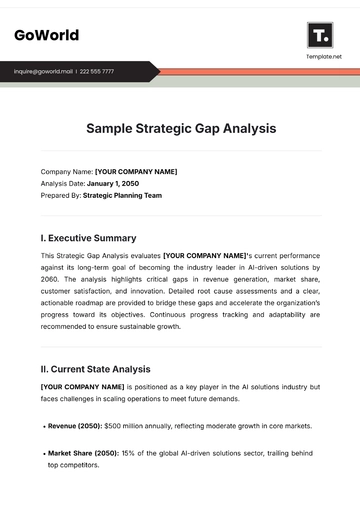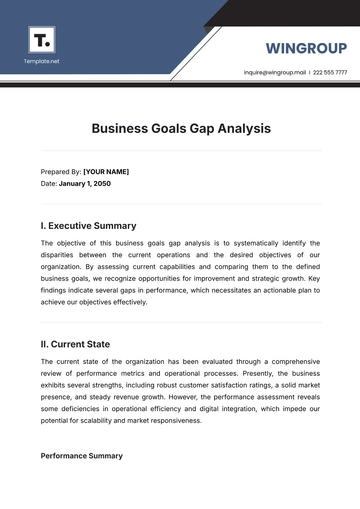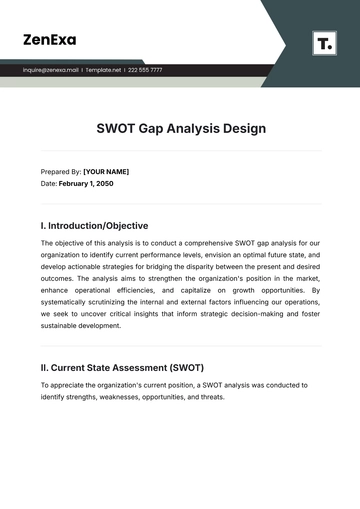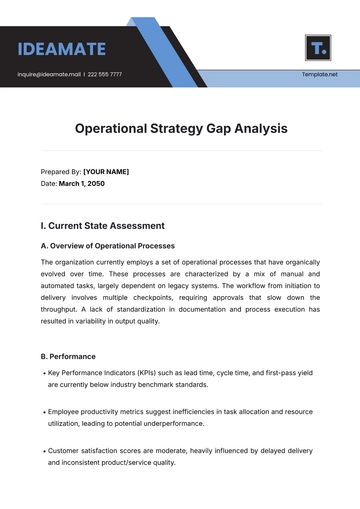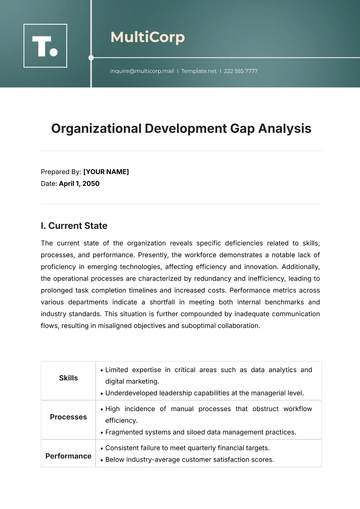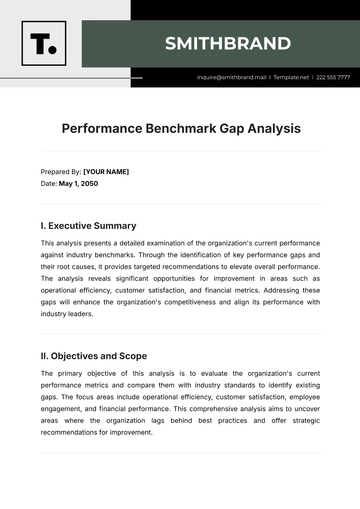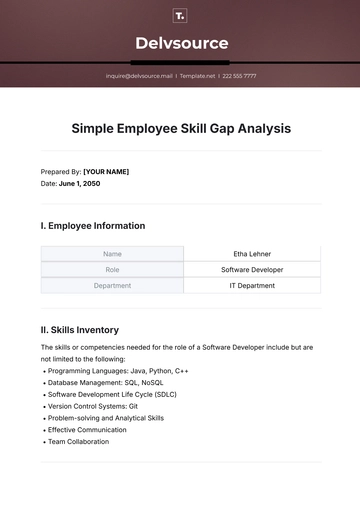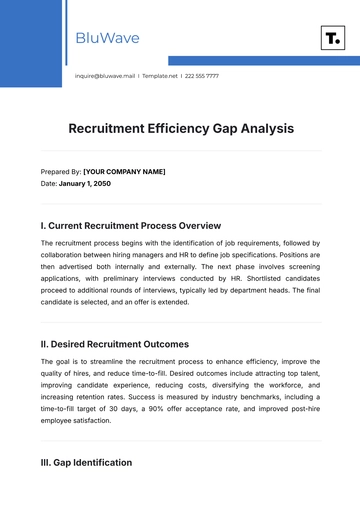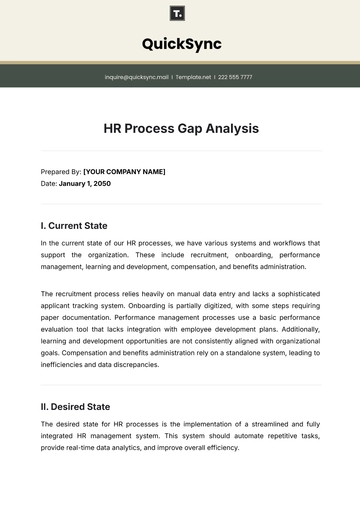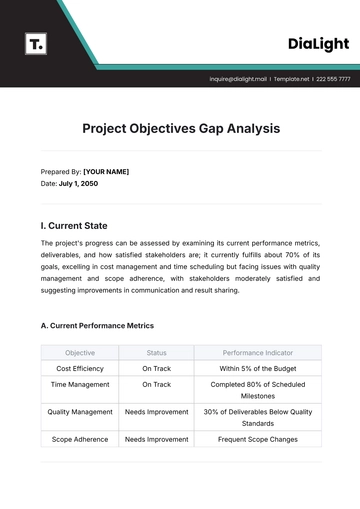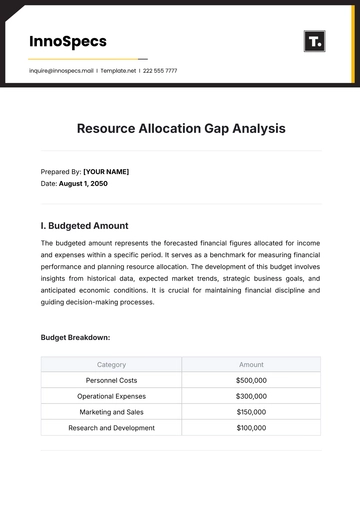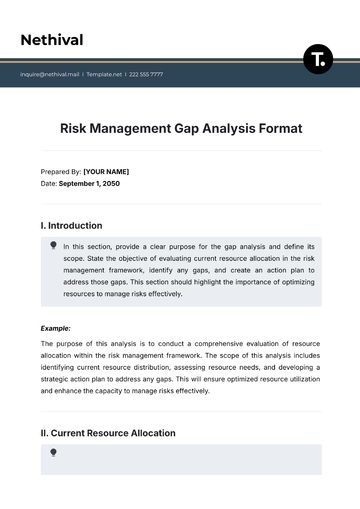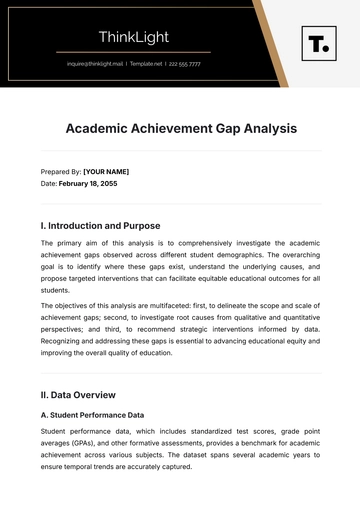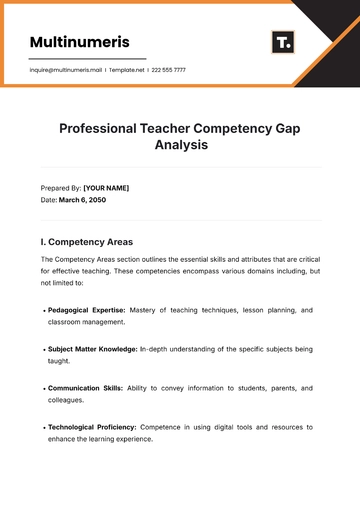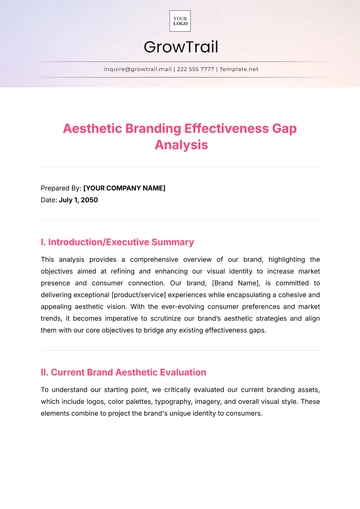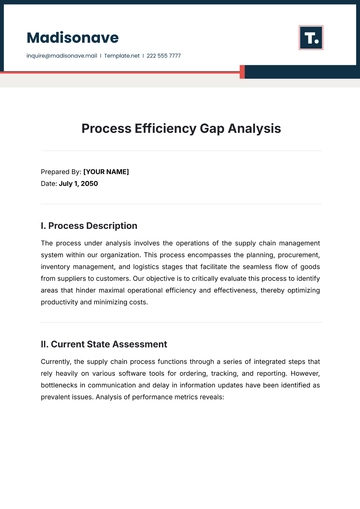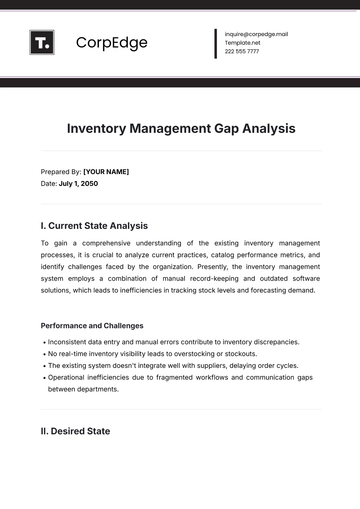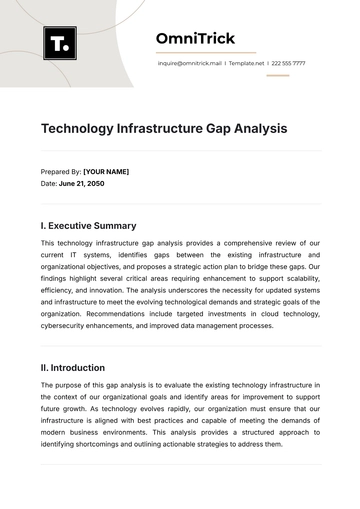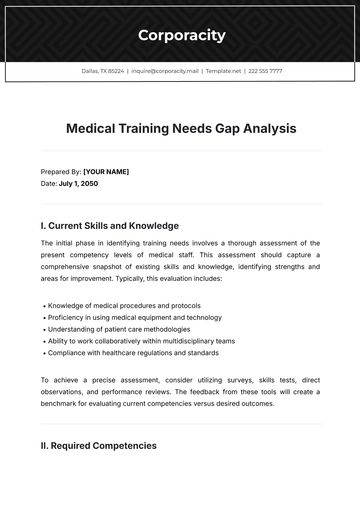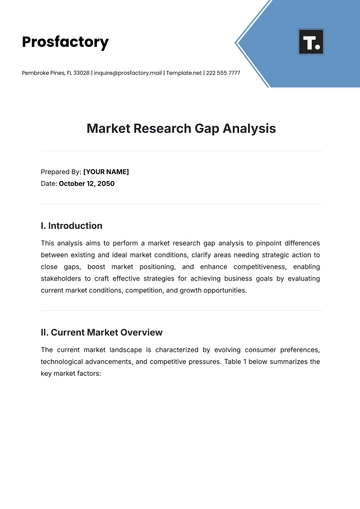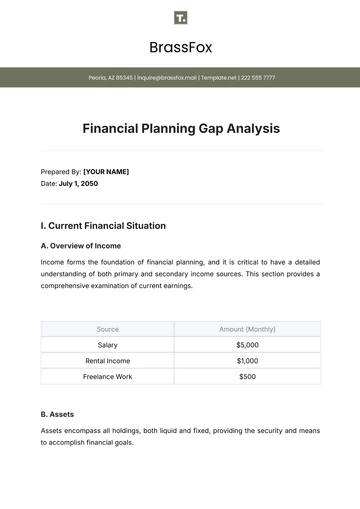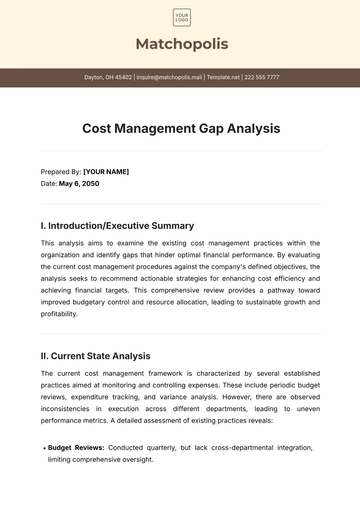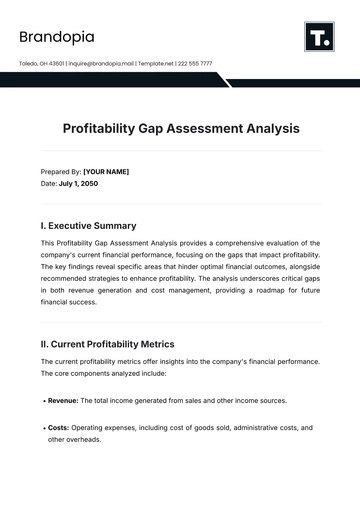Free Team Dynamics & Performance Analysis HR
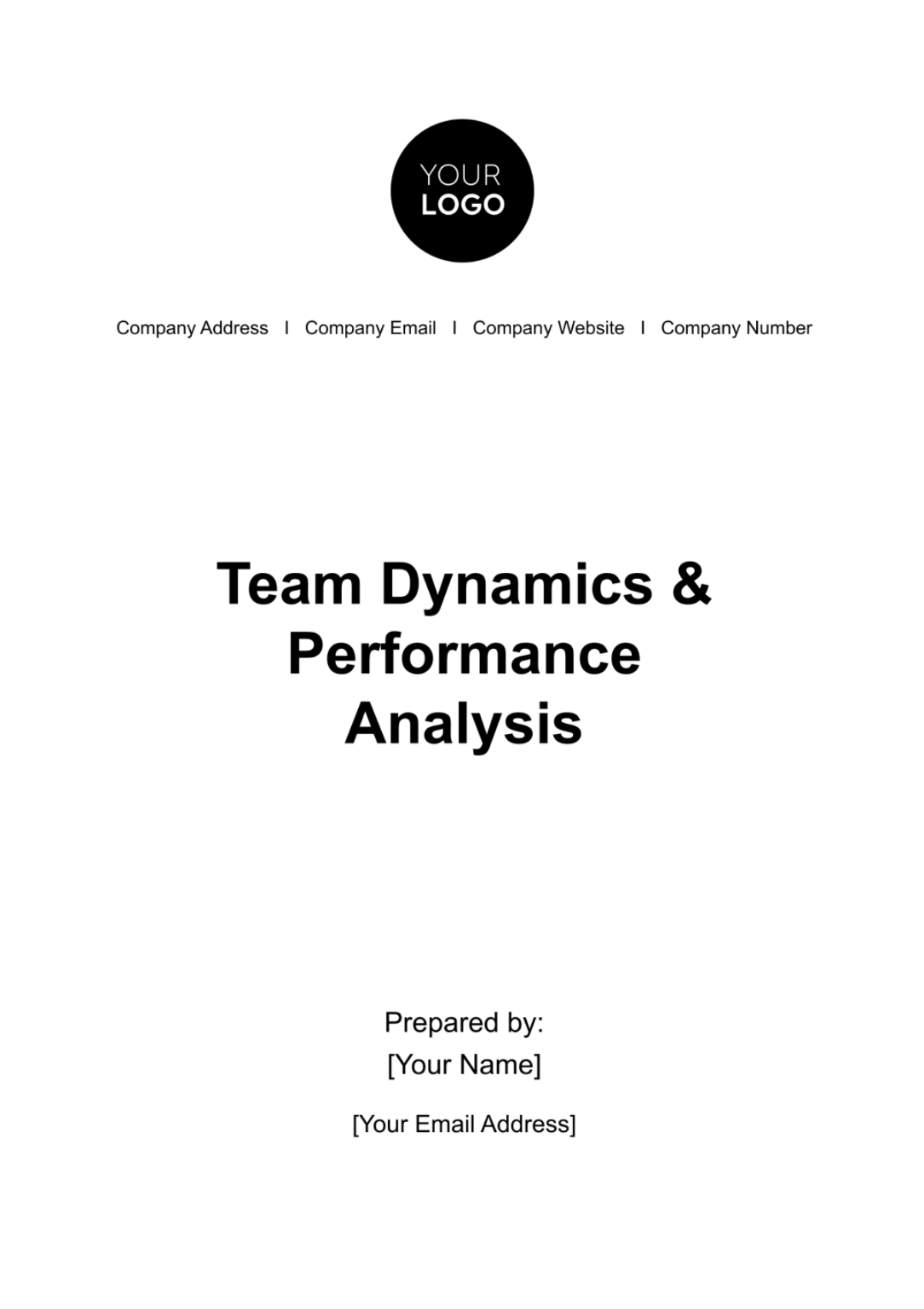
Table of Contents
1. Introduction ............................................................................................................2
2. Objectives ..............................................................................................................2
3. Methodology .........................................................................................................3
4. Performance Metrics ..........................................................................................3
5. Team Dynamics Metrics ....................................................................................4
6. Team Assessment ...............................................................................................5
7. Case Studies ..........................................................................................................5
8. Recommendations ..............................................................................................6
9. Conclusion ..............................................................................................................7
10. Appendices ..........................................................................................................7
1. Introduction
Welcome to the Team Dynamics & Performance Analysis prepared exclusively for [Company Name]. The intent of this report is to offer a meticulous evaluation and assessment of your organizational teams, both at individual and collective levels. With a landscape of ever-changing business requirements and rapidly evolving team structures, it becomes imperative for a forward-thinking company like yours to understand the nuances that contribute to team success or challenges.
This comprehensive analysis delves deep into key performance indicators and metrics specifically tailored to team dynamics, such as communication efficacy, conflict resolution, collaboration, and overall productivity. By focusing on these multifaceted dimensions, we aim to provide a holistic view of your team’s current standing, strengths, and areas that may require attention or improvement.
Moreover, this report doesn't just stop at the assessment stage; it also offers actionable recommendations. These are designed to be easily integrated into your current operational frameworks, thereby providing immediate value. By implementing these suggestions, your teams can optimize performance, cultivate a more collaborative culture, and significantly contribute to [Company Name]'s broader organizational goals.
Through a careful amalgamation of qualitative interviews, quantitative metrics, and real-world case studies, we bring you a well-rounded perspective that serves as a strategic tool for your leadership team.
2. Objectives
Evaluate Current Team Dynamics: The primary objective of this analysis is to gauge the current state of team dynamics within [Company Name]. This involves assessing how well team members communicate, collaborate, and contribute towards achieving common goals. It also takes into account interpersonal relationships, leadership effectiveness, and conflict resolution strategies currently in place. By understanding these factors, we can establish a baseline against which improvements can be measured.
Identify Strengths and Weaknesses in Team Performance: Beyond just assessment, the analysis aims to pinpoint areas where the team excels, as well as aspects that need attention. Strengths could range from highly cohesive team interactions to efficient project completion rates. Weaknesses might involve frequent misunderstandings, delays in task execution, or subpar quality of work. Identification of these areas is crucial for any targeted intervention to be effective.
Provide Actionable Recommendations to Improve Overall Team Productivity: Based on the assessment and identification phases, this report includes concrete, actionable recommendations tailored for your teams. These could involve changes in communication channels, adjustments in team composition, or even recommendations for targeted training programs. The objective is to turn insights into actions that will lead to measurable improvements in team productivity, satisfaction, and overall effectiveness.
3. Methodology
Understanding the complexity of team dynamics and performance requires a multifaceted approach. Hence, we have adopted a rigorous methodology that combines both qualitative and quantitative analysis techniques to ensure a comprehensive evaluation.
Qualitative Interviews: One-on-one interviews with team members and leadership offer deep insights into the interpersonal relationships, communication patterns, and attitudes that are often invisible in numerical data. These interviews are conducted confidentially to encourage candid feedback, which is then analyzed for recurring themes and notable insights.
Performance Reviews: Past and current performance reviews provide an objective look at each team member's skills, productivity, and contributions to team objectives. These reviews serve as a valuable source of data for evaluating both individual and collective performance metrics.
Quantitative Data Metrics: To quantify aspects of team performance, we utilize various metrics such as task completion rates, time-to-market for projects, and qualitative scores from customer or peer reviews. These metrics offer a snapshot of how successfully the team is performing in terms of measurable outcomes.
By synthesizing information from these diverse sources, we are able to create a well-rounded picture of the team’s current state. This integrated approach allows us to not only identify areas of strength and weakness but also to provide targeted recommendations designed to enhance both the dynamics and performance of your teams at [Company Name].
4. Performance Metrics
Metrics include productivity, task completion rates, and employee engagement levels. These are measured using [Software Name].
Metric | Description | Target | Current Status |
Productivity | Average tasks completed per day | 10 | 8 |
Engagement | Results of an employee engagement survey | 80% | 70% |
5. Team Dynamics Metrics
Team dynamics are the invisible forces that operate between different people within a team. These dynamics significantly affect how the team performs, behaves, and achieves its set objectives. Within this section, we focus on metrics that help to quantify and evaluate the key aspects of team dynamics, such as Communication and Conflict Resolution. These metrics serve as performance indicators to identify areas where your teams excel and where there's room for improvement. By comparing target levels against current statuses, we can offer actionable insights to achieve optimal team performance. Below is a table that outlines these metrics, their descriptions, target levels, and the current status as per our most recent evaluation.
Metric | Description | Target | Current Status |
Communication | Level of effective communication among team members | High | Moderate |
Conflict Resolution | Ability to solve conflicts efficiently | High | Moderate |
Collaboration | Degree of cooperative interaction among team members | High | TBD |
In this table, "TBD" (To Be Determined) can be filled in once the current status of the Collaboration metric is assessed.
6. Team Assessment
The Team Assessment section is crucial for identifying both the strengths and areas for improvement among individual team members within [Company Name]. This helps us focus our training and development resources more effectively, ensuring that each team member can excel in their role while also contributing positively to the overall team dynamic. The assessment data has been collected through multiple channels, including performance reviews, 360-degree feedback, and project evaluations. By systematically analyzing this data, we can develop a nuanced understanding of each team member's skill set and thereby outline specific measures for performance enhancement.
Team Assessment Table
Team Member | Strengths | Areas for Improvement | Suggested Training/Action Plan |
[Name 1] | Collaboration | Communication | Enroll in Communication Skills Workshop |
[Name 2] | Technical Skills | Time Management | Attend Time Management Seminar |
[Name 3] | Leadership | Technical Skills | Complete Technical Skills Course |
[Name 4] | Decision Making | Collaboration | Team-Building Activities |
[Name 5] | Project Management | Conflict Resolution | Conflict Resolution Training |
[Name 6] | Communication | Leadership Skills | Leadership Training Program |
Each team member's strengths and areas for improvement are analyzed not just in isolation but also in the context of how they contribute to the team's overall performance. The suggested Training/Action Plan column proposes specific initiatives that each team member can take to improve in their weaker areas, thus elevating their own performance as well as that of the team.
7. Case Studies
The following case studies provide real-world examples of how adjustments in team dynamics can lead to significant improvements in performance and productivity. These case studies are designed to offer actionable insights that can be implemented in similar scenarios within NextGen Tech Upgrade.
Case Study | Situation Description | Challenges Faced | Intervention Strategies | Results Achieved |
Case Study 1: Improving Communication | A project team was missing deadlines and experiencing misunderstandings. | Lack of clear communication, misinterpretation of tasks, delayed decisions. | Introduced a weekly sync-up meeting, implemented a team chat platform, and assigned a communication lead. | After the interventions, the project was delivered on time, and communication scores improved by 35%. |
Case Study 2: Enhancing Collaboration | A cross-functional team was struggling to coordinate their efforts effectively. | Siloed departments, redundant work, lack of cooperative spirit. | Facilitated cross-training sessions, encouraged shared responsibility, and used collaboration software. | Team productivity increased by 25%, and employee satisfaction surveys indicated improved team cohesion. |
Each of these case studies offers valuable lessons in tackling challenges related to team dynamics. By studying these examples, [Company Name] can better understand how to devise effective strategies for enhancing team performance.
8. Recommendations
The Team Dynamics & Performance Analysis for [Company Name] suggests a range of areas where improvement is feasible. Based on our observations and metrics, as well as the case studies presented, we recommend the following actions to further enhance team performance:
Improve Internal Communication Tools
Assess Current Tools: Conduct a review of the current communication tools in use, and identify any gaps or inefficiencies.
Implement Unified Platforms: If multiple tools are being used inconsistently, consider a unified platform that caters to all communication needs—chat, video calls, file sharing, etc.
User Training: Ensure that all team members are adequately trained to use the chosen communication tools effectively.
Develop Conflict Resolution Training Programs
Needs Assessment: Carry out a needs assessment to pinpoint specific areas where conflict resolution skills are lacking.
Custom Training Modules: Develop training modules focused on negotiation, active listening, and problem-solving techniques.
Ongoing Support: Provide continuous resources such as literature, mentorship, and refresher courses to sustain the training's effectiveness over time.
By implementing these recommendations, [Company Name] can create an environment that is more conducive to effective teamwork, thereby improving overall productivity and employee satisfaction.
9. Conclusion
The Team Dynamics & Performance Analysis has provided a comprehensive look into the current state of teams within [Company Name]. While the metrics and observations indicate that the teams are functioning, there is notable room for improvement in key areas such as communication, conflict resolution, and collaboration. Addressing these issues is not just an operational necessity but a strategic imperative. Ignoring them can lead to decreased productivity, lower employee satisfaction, and ultimately, a decline in organizational health.
However, the good news is that the identified areas for improvement are actionable. By implementing the recommended changes, particularly in internal communication tools and conflict resolution training programs, [Company Name] has an opportunity to significantly enhance its operational effectiveness. This, in turn, can result in a more engaged workforce, improved team dynamics, and a robust increase in overall productivity and satisfaction levels across the organization.
10. Appendices
Team Assessment Tools
Tool Name | Description | Usage Frequency |
DISC Assessment | Evaluates behavior and personality styles | Quarterly |
360-Degree Feedback | Collects anonymous feedback from peers, subordinates, and managers | Semi-Annually |
Team Health Check | Quick survey to gauge team satisfaction and issues | Monthly |
Myers-Briggs Type Indicator (MBTI) | Assesses psychological preferences in how people perceive the world | Annually |
Performance Metrics
Metric Name | KPI Measurement | Target | Current Status | Data Source |
Team Productivity | Tasks Completed | 95% | 88% | Project Management Software |
Employee Engagement | Survey Score | >85 | 78 | Annual Employee Survey |
Absenteeism Rate | % Unplanned Absence | <5% | 6% | HR Records |
Team Cohesion | Team Satisfaction | High | Moderate | Team Health Check |
Communication Tools
Tool Name | Description | Usage Policy |
Slack | Instant messaging and collaboration | Daily |
Zoom | Video conferencing | As needed |
Microsoft Teams | Collaboration platform with chat, video, and file sharing | Daily |
Company Intranet | Internal company updates and document storage | Weekly |
By utilizing these tools and metrics, Cultural Synergy Project aims to closely monitor, assess, and enhance team performance and dynamics.
For any queries or further clarification, please contact Gregg P. Williams at gregg@mail.com or 333 555 77777.
Patrick C. Bearce, 15 Jan 2050
Prepared by:
Mary E. Nicholes
HR Consultant
mary@mail.com
222 333 5555
15 Jan 2015
NextGen Tech Upgrade
1030 Lowland Drive
Plainfield, IL 60544
333 444 9999
mary@nextgen.com
- 100% Customizable, free editor
- Access 1 Million+ Templates, photo’s & graphics
- Download or share as a template
- Click and replace photos, graphics, text, backgrounds
- Resize, crop, AI write & more
- Access advanced editor
Take your team's performance to the next level with our comprehensive Team Dynamics & Performance Analysis HR Template. Designed for HR professionals, this template offers detailed metrics, case studies, and actionable recommendations. Easily assess team strengths, weaknesses, and productivity to create targeted improvement strategies. Take the first step towards a more cohesive and efficient team today.

